Queen Bees life cycle and royal jelly. The life cycle of the queen bee and what makes her live longer, is it royal jelly?
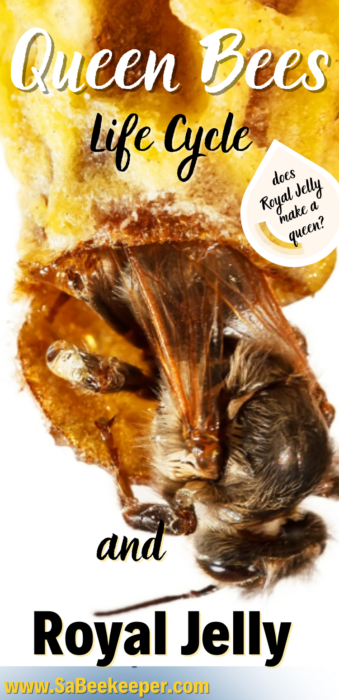
On the honey bees comb the original queen bee lays her eggs. Some times the worker bees realize that the queen bee needs to be replaced, then they make a queen bee cell.
We discuss the queen bees life cycle and royal jelly.
View the life cycle of a honey bee here.
The queen bees life cycle.
Queens are developed from larvae selected by worker bees and specially fed in order to become sexually mature. There is normally only one adult, mated queen in a hive.
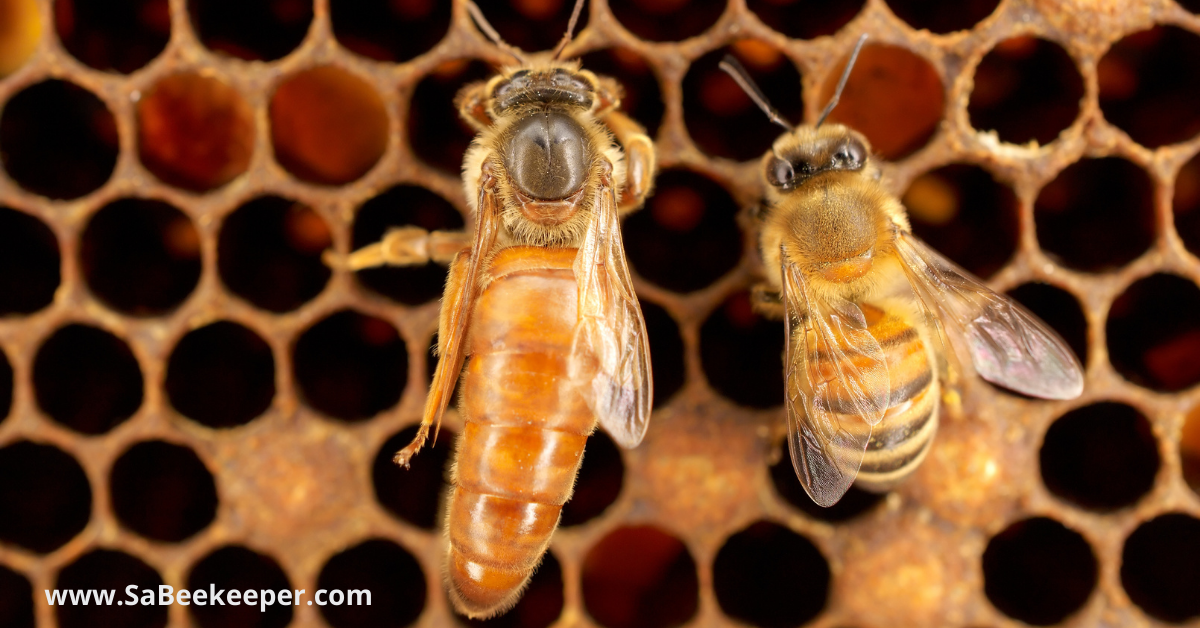
The queen bee is typically used to refer to an adult, mated female that lives in a honey bee colony or hive. A female bee with fully developed reproductive organs, she is usually the mother of all of the bees in the beehive. In which case the bees will usually follow and fiercely protect her.
The cells
The cell is larger than the normal cells that are in the comb. Normally called queen cups and are vertically instead of horizontally. Worker bees will only further build up the queen cup once the queen has laid an egg in a queen cup.
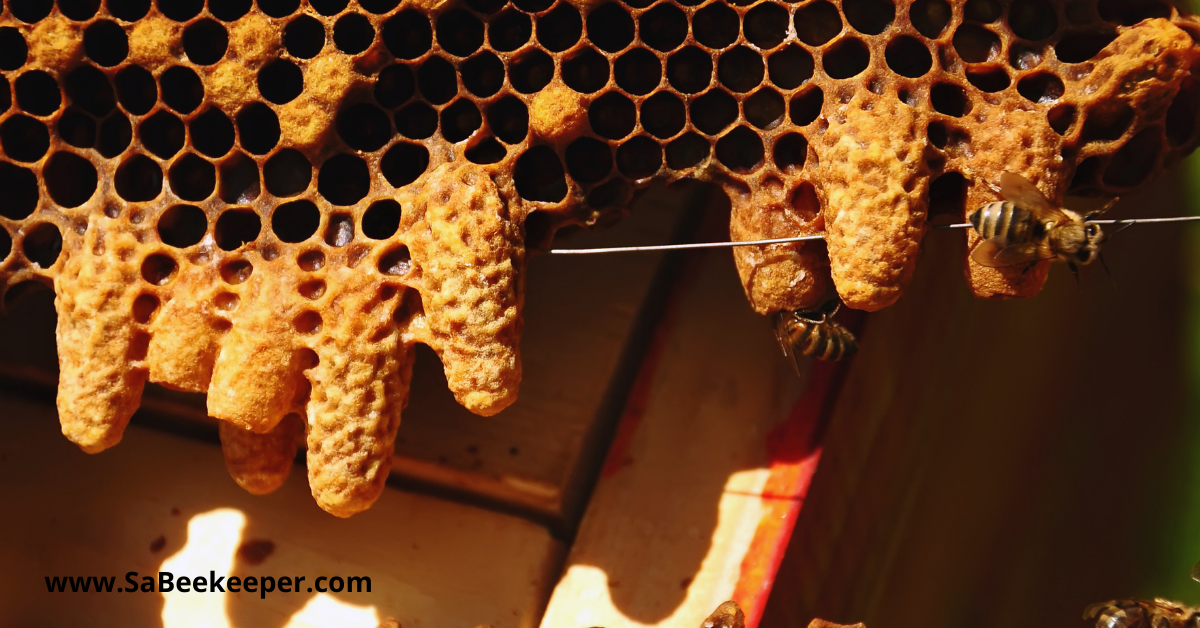
Normally laid on the edge of the comb and larger.
Diet in the larval stage determines whether the bee will develop into a queen or a worker. Queens are fed only royal jelly, a protein-rich secretion from glands on the heads of young workers.
As the young queen larvae pupates with her head down, the workers cap the queen cell with beeswax. When ready to emerge, the virgin queen will chew a circular cut around the cap of her cell. Often the cap swings open when most of the cut is made, so as to appear like a hinged lid.
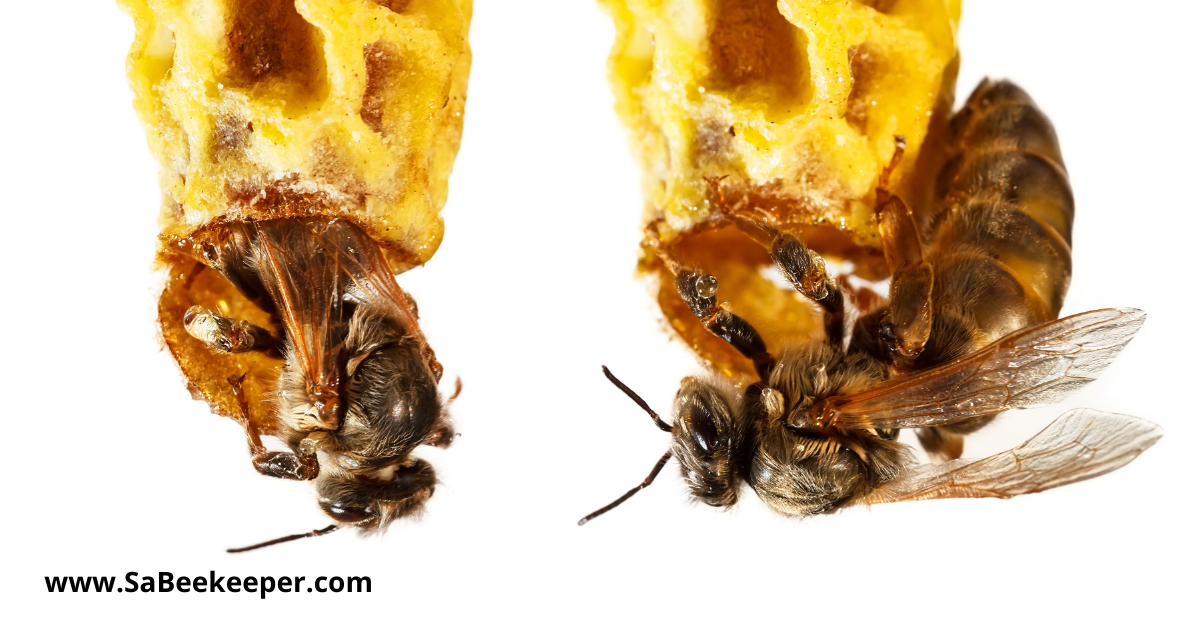
As a result of the difference in diet, the queen will develop into a sexually mature female, unlike the worker bees.
During swarming season, the old queen is likely to leave with the prime swarm before the first virgin queen emerges from a queen cell.
Hatching of the queen bee calendar
The virgin queen bee hatches on day 3 in the cell. (eats her royal jelly provided)
Become larvae from day 3 to 7 or 8 days. (molting several times)
The queen cell is capped by the worker bees on day 7 or 8. (when they become pupa.)
They emerge on day 15 to 17. (A fully grown queen bee)
They start flying from day 20 to 24 (this is when the drone bee mates with them)
Laying eggs on days, 23 and up (if they have been mated by a drone male bee, and are the adult queen bee in the hive.)
Queen bees info.
Virgin queens appear to have little queen pheromone and often do not appear to be recognized as queens by the workers. A virgin queen in her first few hours after emergence can be placed into the entrance of any queen less hive or nuc and acceptance is usually very good. Whereas a mated queen is usually recognized as a stranger and runs a high risk of being killed by the older workers.
As the queen ages her pheromone output diminishes. A queen bee that becomes old, or is diseased or failing, is replaced.
Her life will carry on in the same pattern of a mated queen bee
Unlike the worker bees, the queen’s stinger is not barbed and she is able to sting repeatedly without dying. ( View the anatomy of a honey bee stinging barb)
What is royal jelly.
Well Royal jelly is a honey bee secretion that is used in the nutrition of bee larvae.
The royal jelly consists of flower nectar, proteins, glucose, fats, minerals, vitamins, and amino acids. Royal jelly, which also is called “bee milk,” looks like white liquid substance.
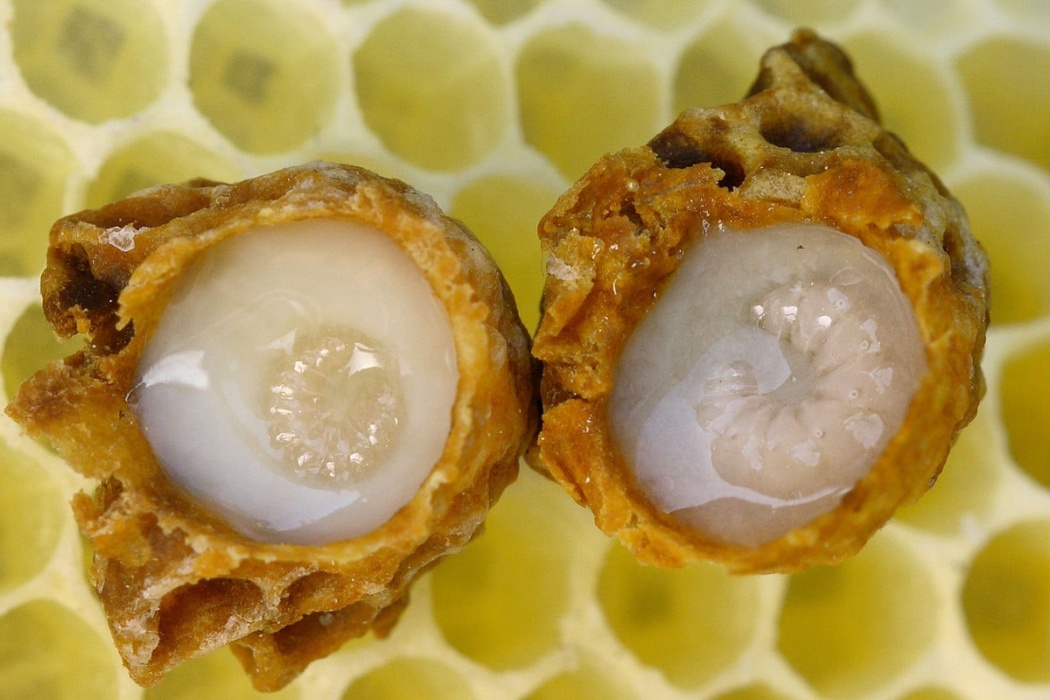
More than half of it is water. Special glands in the heads of worker bees secrete the stuff, which gets fed to baby bees. View the anatomy of the honey bee for description.
It is the sole diet of the queen-bee and provides her with superior life expectancy and increased fertility. The queen bee does not get the pollen and honey mixture given to the worker bees.
Do all bees eat royal jelly?
Yes at first 3 days all the larvae that hatches gets the royal jelly. Then they change their diet for pollen and honey mix. (Bee bread)
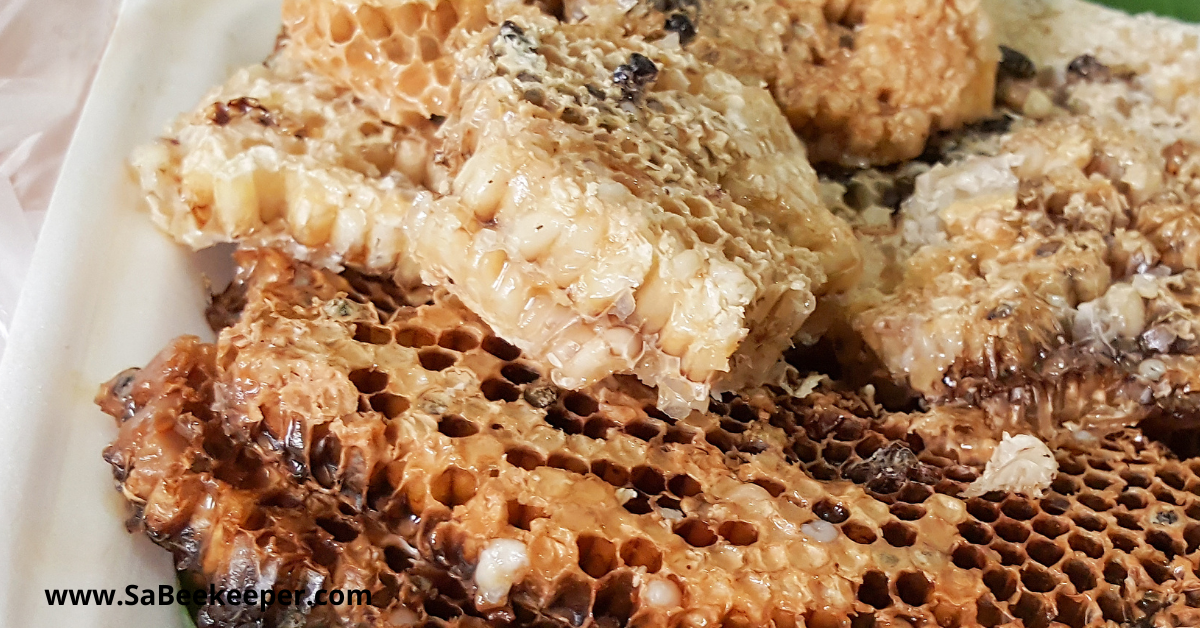
What is found that Royal jelly does for queen bees.
Some describe withholding royal jelly from worker bees as nutritional castration.
These bees don’t get the special food of genetic monarchies. And so, its thought, their ovaries shrivel, and they don’t become a queen.
It turns out, it’s the other way around. Not feeding an immature queen pollen and honey is what makes her royal, not her exclusive access to royal jelly.
Genes of the queen.
A worker bee and a queen bee differ only in which genes are activated. Genes make proteins, which build the rest of our bodies. By manipulating the environment of their offspring, honey bees genetically alter their bodies via nutrition.
Bees diet is involved in building different kinds of bee bodies.
Queen larvae are surrounded by royal jelly, and they float on a sea of sugary bee gland liquid in enlarged cells.
Worker bees eat beebread (a type of fermented pollen) and honey. Nurse bees mash this into a “worker jelly” and add glandular secretions as a garnish.
Workers don’t get the special stuff in queen jelly, and their ovaries shrivel. (That’s the conventional explanation. But Dr. May Berenbaum, a professor at University of Illinois)
Bee Bread.
The bee bread and honey are derived from plant materials. Like many plant materials, they contain a variety of phenolic chemicals. We eat them all the time. Flavonoids are the plant chemicals that give plants their unique flavors (and help plants discourage plant-eating insects, among other functions).
Royal jelly.
However, has no detectable phenolic acids. None. From previous research the researchers knew that flavonoids increase immune responses of adult worker bees. That’s a good thing, it has the side effect of helping bees detoxify pesticides faster.
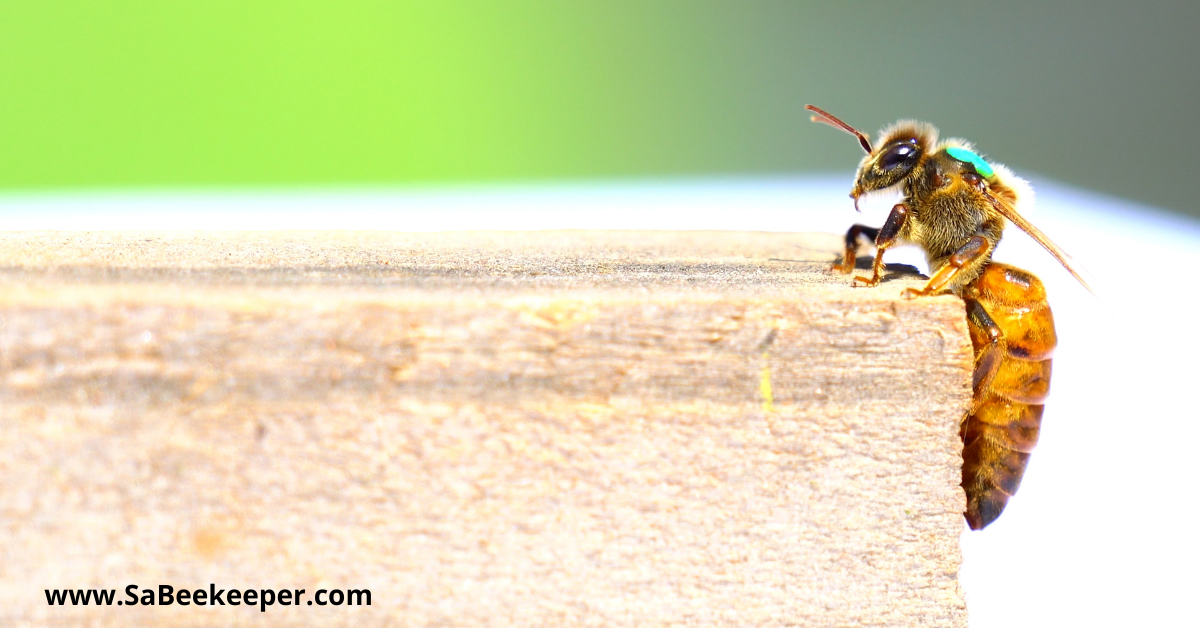
Moral of the story is.
Why do queen bees live 40 times longer than worker bees? Just like with humans…it’s all about her diet.
What makes a queen bee a queen? She’s the only bee in the hive laying eggs.
Leave a Reply